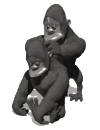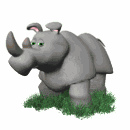


Port
Basics
How Did You Do?
"; function checkanswers() { if (document.form1.radiobutton1[2].checked==1) { feedbackString=feedbackString + "" + (count+1) + ". "+ " GOOD JOB! That is the correct answer. Here is further explanation.
" + Feedback[count] + "
" + (count+1) + ". " + " Sorry, but that's the wrong answer. Here is the correct answer.
" + Feedback[count] + "
" + (count+1) + ". "+ " GOOD JOB! That is the correct answer. Here is further explanation.
" + Feedback[count] + "
" + (count+1) + ". " + " Sorry, but that's the wrong answer. Here is the correct answer.
" + Feedback[count] + "
" + (count+1) + ". "+ " GOOD JOB! That is the correct answer. Here is further explanation.
" + Feedback[count] + "
" + (count+1) + ". " + " Sorry, but that's the wrong answer. Here is the correct answer.
" + Feedback[count] + "